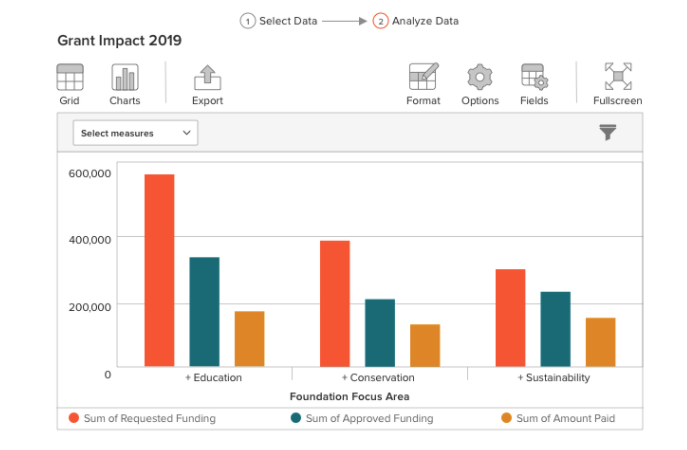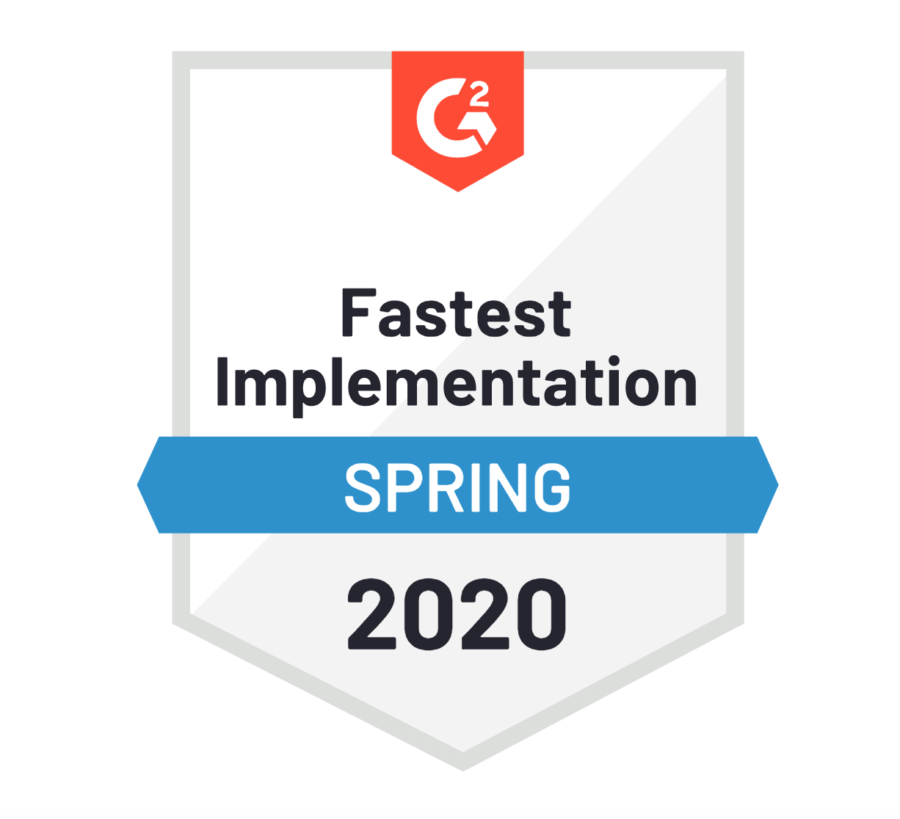The events of 2020 made substantial, impactful corporate social responsibility (CSR) even more important.
Consumers, employees, investors, and other stakeholders are paying more attention, have higher standards, and are more willing to inflict consequences on businesses that don’t meet their expectations. To name a few of the dynamics at work:
- The inequities exposed—and worsened—by the COVID-19 crisis
- Heightened and ongoing demands for racial justice
- Trends in boycotting and/or divesting from brands complicit with social evils (such as environmental irresponsibility or the spread of misinformation)
These themes have all contributed to society’s increasing demands for accountability.
The result? When it comes to CSR, lip service, a shallow initiative, or activities that can’t show results simply won’t cut it.
In fact:
- 42% of millennials have “begun or deepened” their relationships with businesses they believe have positive impacts in society or the environment. (Deloitte)
- 70% of Gen Z consumers try to buy from companies they consider ethical. (McKinsey)
Moreover, an efficient, effective program means you can do way more good—with the same amount of money.
In this piece, we’ll explain how to improve your CSR program with eight principle-based steps. Informed by major trends in philanthropy, this framework will help you evaluate and enhance your social responsibility, so you can make a bigger impact.

1. Ask tough questions
Have the courage to ask tough questions. Is your commitment to corporate responsibility sincere?
It’s increasingly transparent when corporations are talking the talk, but not walking the walk.
Take a long, hard look at your organization internally. An easy place to test the effectiveness of your company’s social responsibility efforts is by assessing your performance against your own corporate values, mission statement, or CSR objectives.
For example, let’s say you value diversity. Is that value reflected in the makeup of leadership, the Board of Directors, and the staff? Or if you are committed to environmental stewardship, are recycling and composting practiced at the office, and are employees incentivized to commute in sustainable ways, or allowed to telecommute when practical? If community is important to you, are authentic efforts undertaken to engage with and benefit your own community through your activities?
Answering these questions may not always be comfortable—but it is essential. Reflecting a sincere commitment to CSR practices when looking in the mirror is a precursor to achieving the many benefits that come with an effective, cultural investment in good corporate governance.
Remember, it’s okay if the answers you find aren’t what you or others want to hear or believe. Only by taking a forthright assessment can you identify where you need to implement change. And by getting your own house in order, you’re creating a stronger foundation to move forward with an impactful CSR strategy that expands beyond your walls.
Which brings us to the flip side of the tough questions evaluation: honesty about the impact of your current programs.
No one—especially not donors and funders—likes hearing stories about failure. It could also be that historically, you haven’t made time to even consider failure. This bias toward positivity may mean that when you’re seeking to understand your impact, you’ve only been open to hearing about good stuff. These positive stories might be only partially true or real.
While understandable, this prejudice is actually counter-productive. Hearing just one side of the story will inhibit your program from improving. CSR leaders suggest a better approach is a culture of bold honesty.
Be honest:
- …about successes and failures
- …that change can be messy
- …that mistakes happen
- …that priorities can shift
Fostering this culture of asking tough questions in partnership with beneficiaries of your corporate social responsibility initiatives will result in a more objective evaluation of impact. It will also create a stronger footing from which to apply lessons learned, move forward, and achieve better outcomes in the future.
2. Increase transparency
Transparency is the ultimate trust-builder, and should be considered a guiding principle for any socially responsible company. This concept should apply to goals, ongoing initiatives, and ultimate progress or results.
Let’s start with your goals. Many companies, such as Microsoft and LEGO, have publicly committed to ambitious objectives—specific outcomes tied to dates. (For instance, LEGO aims to make all core products from sustainable materials by 2030.)
A public commitment to your company’s CSR goals could help from every angle:
- It could help align your team internally, enhancing benefits such as improved employee recruitment, engagement, and retention.
- It could hold you accountable and make it more likely that you invest the resources required to meet your objectives.
- It could help build customer loyalty and a positive reputation among consumers.
Transparency should be incorporated into ongoing CSR projects, as well. For instance, if you run a grants program, clarity about who you fund and how you make those decisions is crucial. For products, transparency around your supply chain, factories, or vendors—and how you choose who you will do business with—would apply.
Finally, as you make progress against your goals or conclude a program, shed light on your CSR performance. Many corporations do this through an annual CSR Report. Sharing the results through an annual assessment closes the trust-building loop with stakeholders. It shows employees, customers, investors, and your community that your CSR activities go beyond a verbal commitment, and have real-world impact.

3. Focus on equity
Equity is a vital lens through which to evaluate your business practices and CSR strategy, at both a micro and macro level.
Not only is ensuring that your program furthers social and racial justice a cornerstone of the very essence of corporate responsibility, but study after study establishes that improved diversity and inclusion leads to better outcomes for everyone—from increased innovation and competitiveness, to stronger ethics and team culture.
Applying an equity lens is a useful approach to assess and improve your company’s CSR. While it will look a little different for every activity and organization, we’ll use a community grant as an example of the kinds of questions you can and should ask when applying the equity lens to your own programs.
Designing a grant program
Are you applying trust-based principles for providing funding (such as a multi-year, unrestricted grant)?
At its core, trust-based philanthropy is about redistributing power—systemically, organizationally, and interpersonally—in service of a healthier and more equitable nonprofit sector. On a practical level, this includes multi-year unrestricted funding, streamlined applications and reporting, and a commitment to building relationships based on transparency, dialogue, and mutual learning.
Trust-Based Philanthropy Project
Building your application
- Did you apply best practices to questions about demographic data (such as explaining why you are collecting the information, giving the ability to self-describe, and making all questions optional?)
- Did you make efforts to ensure that the application form was shared with diverse communities, through partnerships, advertising, social media, or other means?
- Did you keep your application form as concise as possible, to reduce the burden on applicants?

Creating your review process
- Are you using grant management software that allows you to hide sensitive applicant information from reviewers, such as demographic data, to avoid bias?
- Do the individuals on your review board reflect the makeup of the community the grant intends to serve?
- Are you using a remote review process that is inclusive of those who may not have the means to travel or who have time constraints?
- Are you offering compensation for the work of your review team?
- Are you using a rubric to help ensure that all voices are heard equally and held to a single standard?


Reporting on impact
- Are you analyzing your pool of applicants to determine where you need to improve your outreach to diverse communities?
- If applicable, do you have processes in place to evaluate the diversity of the populations your grantees serve, such as via impact reporting?
- Are reporting requirements and processes streamlined to minimize the burden on grantees?
- Are you giving grantees the opportunity to share their successes according to their own standards of measurement?

Note that this is not a comprehensive list. The key takeaway here is that you can improve equity in your programs in ways both big and small, and throughout the lifecycle of a program, by applying an equity lens. And a program that is comprehensively equitable goes so much further toward achieving the overall objective of CSR—creating a positive social, economic, and environmental impact.
A final note on equity: keep in mind that working for equity is everyone’s responsibility, especially white people’s.
Want to increase engagement—while saving resources?
See how Submittable simplifies all kinds of CSR activities, from grants to awards and everywhere in between.
4. Deepen community connections
Consider that “philanthropy”, etymologically, means the love of mankind. As thought leader Erik Clemons recently posed at a panel: how can you love someone you don’t know?
This question challenges those companies through their CSR efforts to get to know the individuals and communities that they serve on a genuine, human level.
Deepening your organization’s connection to those on the other side of your CSR projects will have far-reaching benefits. These could likely include developing a more impactful program, as you strengthen your understanding of the needs of the community served. You could also see a measurable boost in employee engagement, morale, and company culture, as the opportunities to make more meaningful contributions to the program evolve.
Deepening your connection to the communities served through your CSR practices will always look a little different. Here are some ideas to consider to get you started:
- Brown bag lunches to learn more about organizations or causes served by your CSR program
- Employee volunteer or pro bono opportunities to contribute to funded nonprofits
- Fellowship or internship programs that lead to the opportunity for employment within your organization
- Inviting employees to participate in mentorship programs with partner nonprofits and the communities they serve
- A casual get-together—a barbecue, game night, or happy hour—hosted by your organization and easily accessible by communities served—where your employees and beneficiaries can simply mingle and get to know each other in a low-pressure environment
- Solicit feedback from beneficiaries about the program—and take it seriously.

One result of deepening your connection with beneficiaries may be that you learn things that aren’t necessarily what you wanted to hear. This is a positive outcome, and a great opportunity for growth. Really listening to the community you serve means being open to hearing how you may have missed the mark. That conversation is constructive, and a good indicator of trust. Welcome it, and implement changes based on what you learn.
5. Reimagine risk tolerance
Risk tolerance is another topic historically under-considered in philanthropic spaces. In a recent keynote, thought leader Pia Infante reminded her audience that when it comes to many types of giving, including corporate, the money is already committed, and therefore not really “at risk.”
What is at risk? In many cases, she suggests, reputation and ego—the desire to be seen as “data-driven” or “metrics-based.” This focus can lead to CSR practices which are overly focused on compliance and inflexible data requirements.
An obsession with compliance with rigid reporting standards, however, is often at the expense of being truly proximate to need, and ensuring that programs are maximally impactful.
When it comes to assessing the risk tolerance of your CSR program, one barometer could be to ask: does it match the risk tolerance of other areas of the business? If your product or marketing or sales teams are encouraged to take risks, make mistakes, and learn along the way, shouldn’t the same attitude of being open to learning and improving apply to your corporate social responsibility strategy and initiatives?
Ben and Jerry’s Ice Cream offers one example of what a riskier CSR maneuver might look like. Their statement following George Floyd’s murder loudly proclaimed: “WE MUST DISMANTLE WHITE SUPREMACY.” It goes on to call for four specific policy priorities to further racial justice in the United State. As the tweet below, one of many examples, shows, the statement generated a lot of positive buzz for the ice cream business.

6. Evolve your idea of measurability
It’s likely that your current CSR program is measurable to some extent, and has been measured. With society’s data obsession, creating a social value initiative without measurable impact is almost unthinkable. But current thinking on CSR measurability could help you evolve your understanding of what measurability is and improve your program.
The first rule of thumb to consider is that there is no one right way to report on impact. It will look different for every effort and every company. Remember, thinking of success in terms of “working” or “not working” is too binary—it depends on who is doing the measuring and what their goals are.
Next, consider your timeline. Evaluating at the right moment is crucial: consider that longer-term initiatives will take longer to show results. Good ideas could risk failing if held to too-rigorous evaluation standards too early in the process, warned thought leader Neil Buddy Shah at a recent panel.
Finally, don’t under-value qualitative data. The recipient of any giving initiative isn’t a project, it’s people. To truly measure impact, you need to involve not only numbers, but stories. Keep in mind that stories can take many forms, including not only narrative, but audio, visual, or video.

7. Encourage creativity
Creativity as a principle may feel out of place in a discussion of how to improve CSR. Yet it’s a concept increasingly invoked in philanthropic thought leadership, and for good reason.
Consider where we are as a society: none of our problems are new. As Pia Infante put it in a recent keynote at the Yale Philanthropy Conference, if we aren’t creative, we will “replicate the same systems of extraction that got us here.”
After all—this work is tough. Creative ideas and endeavors not only let us explore new ways to be impactful, they also help us process the stress and emotions that often accompany this work.
If you’re not sure where to start in terms of injecting more creativity into your CSR projects, it may be time to open the doors for feedback from your employees, partners, or even customers.
Each individual stakeholder is a person with unique talents and interests that can be tapped. And, engaging employees and customers can have benefits such as building brand equity and improving employee retention.
For an example of a creative initiative, consider Patagonia, which donated 100% of their Black Friday profits in 2016 to environmental causes (in addition to the “1% for the planet” that they honor at all times). Proof that creativity can pay off? That Black Friday Patagonia had record breaking sales of over $10 million.
The right technology can make small and large-scale creative programs easy to set up and pull off. Submittable’s social impact platform can be leveraged in countless innovative ways:
- A recognition program for customers practicing environmentally-friendly habits at home
- A public contest for the best idea of how to spend a grant within a community
- An internal vote for employees’ preferred volunteer opportunity
When it comes to creativity, the sky’s the limit. An unexpected CSR activity could be just the thing to improve workplace culture and uncover new social value.

8. Improve your responsiveness
Responsiveness is an area where many corporations made progress in 2020 as a result of the COVID-19 emergency. The challenge now is to hold on to this nimbleness moving forward.
One important strategy to balance ongoing initiatives with the need to respond quickly to evolving situations is to make a disaster budget part of your CSR strategic plan.

Responsiveness typically involves the ability to move quickly. To be able to launch a new program fast, you’ll want an easy-to-use platform for creating the grants or other opportunities that are part of your CSR program. Submittable was awarded the Fastest Implementation award for grant management software in Spring 2020 by trusted software review site G2.
If we’re putting something new up … I’ll have it done within an hour.
Kit Shah, Co-Founder of the London Photo Festival
The ability to move quickly in terms of logistically launching a new program can make a world of difference in terms of meeting the moment in a crisis.
Another essential aspect of your CSR software is editability. When you’re moving quickly, it’s common—and okay!—to find that you missed something, or need to iterate as you go. Some software requires back and forth with support teams to make edits. Or if you use a homegrown system, certain elements could be hard coded and require your technical team to make changes.
With Submittable, you can make any changes you need in real time: to guidelines, application forms, response templates, review forms, you name it.
I’ve worked with different application softwares over the years for both grant management and for other purposes in the office. Submittable provides quick turnaround when you can edit your own forms—and it doesn’t require a lot of training to learn how to do that.
Angie Nelson, Senior Budget Analyst, State of Montana
With money set aside and a flexible platform, your corporate responsibility program can move with speed and agility to respond and help in disasters.
Learn more about Submittable
For organizations ready to seriously improve their company’s CSR, Submittable is here to help.
Submittable is a CSR software that includes tools to help you run nimble programs, build stronger relationships, foster equity, and report on your impact. Contact us anytime to learn more, or watch a demo now. We love connecting with the people investing in real change.